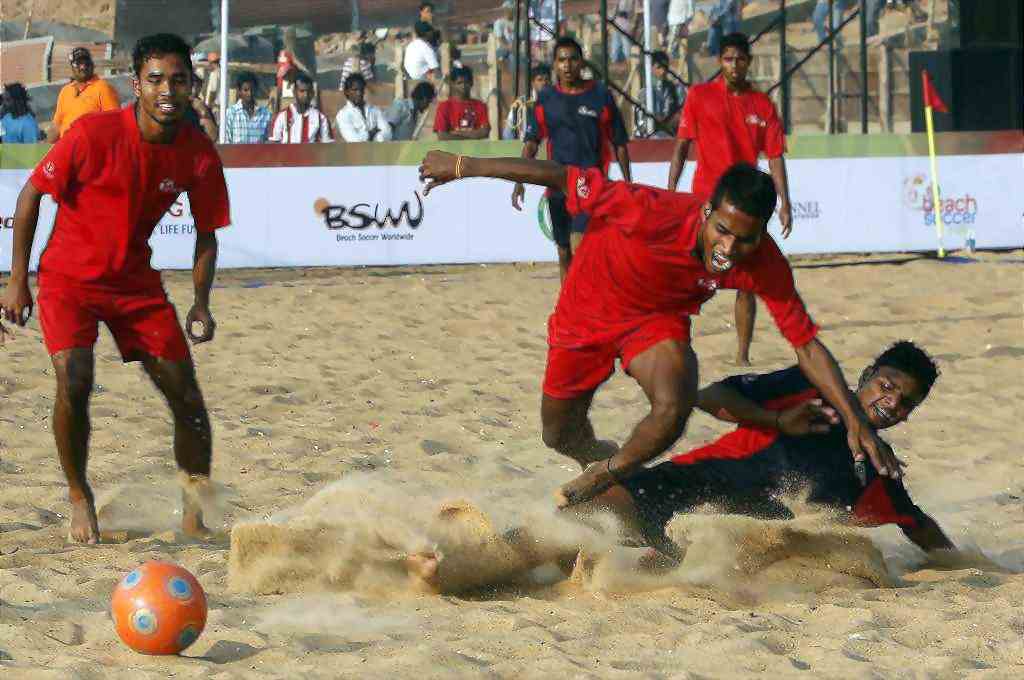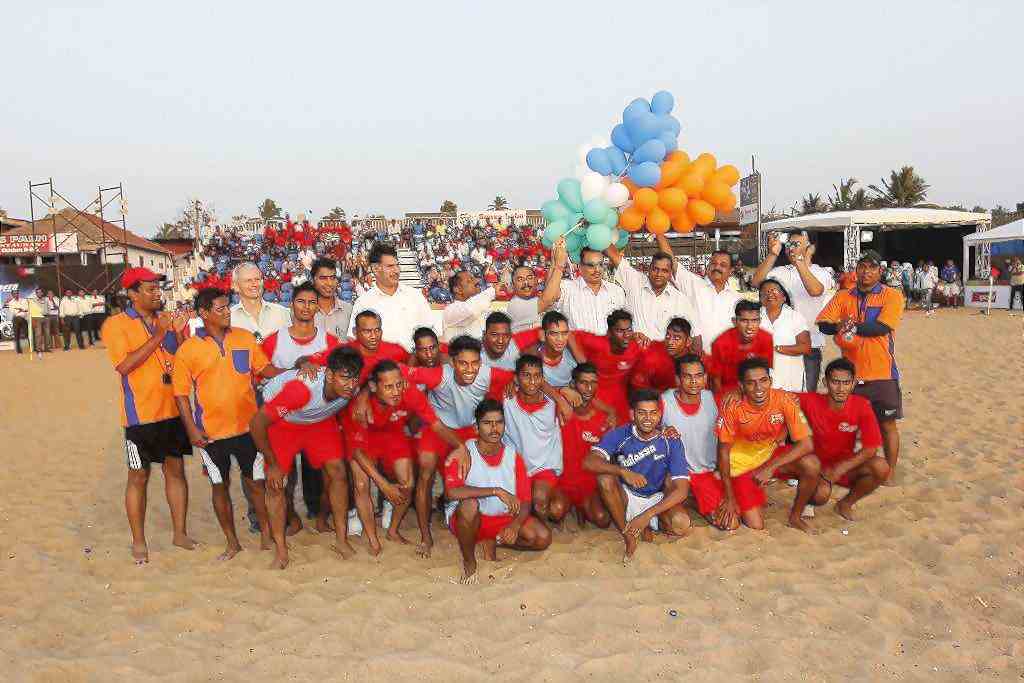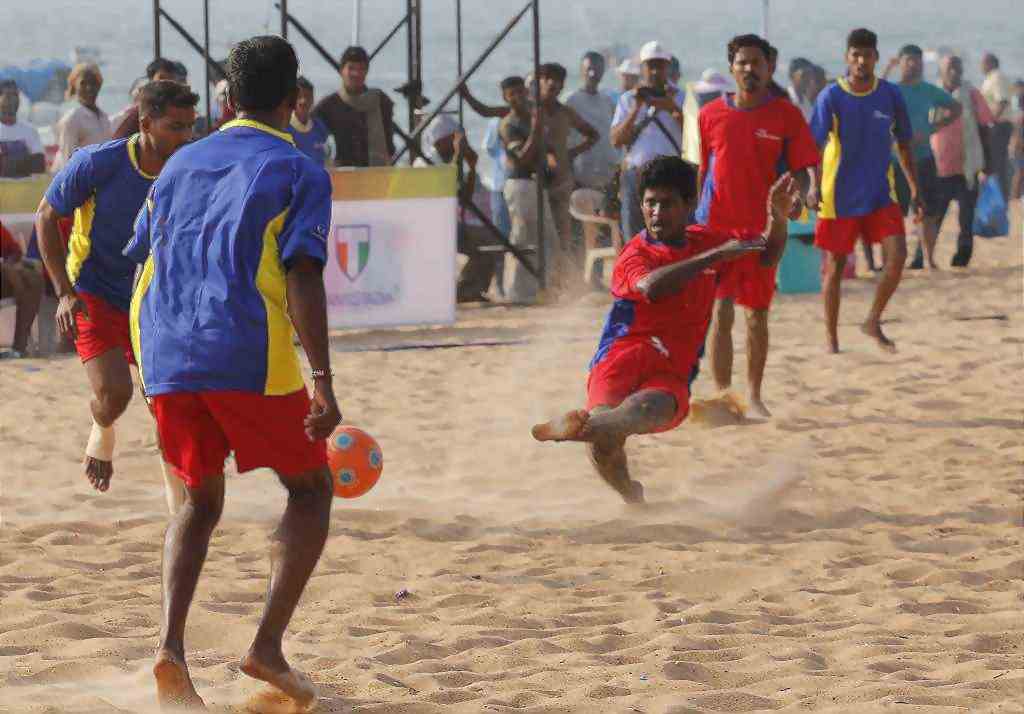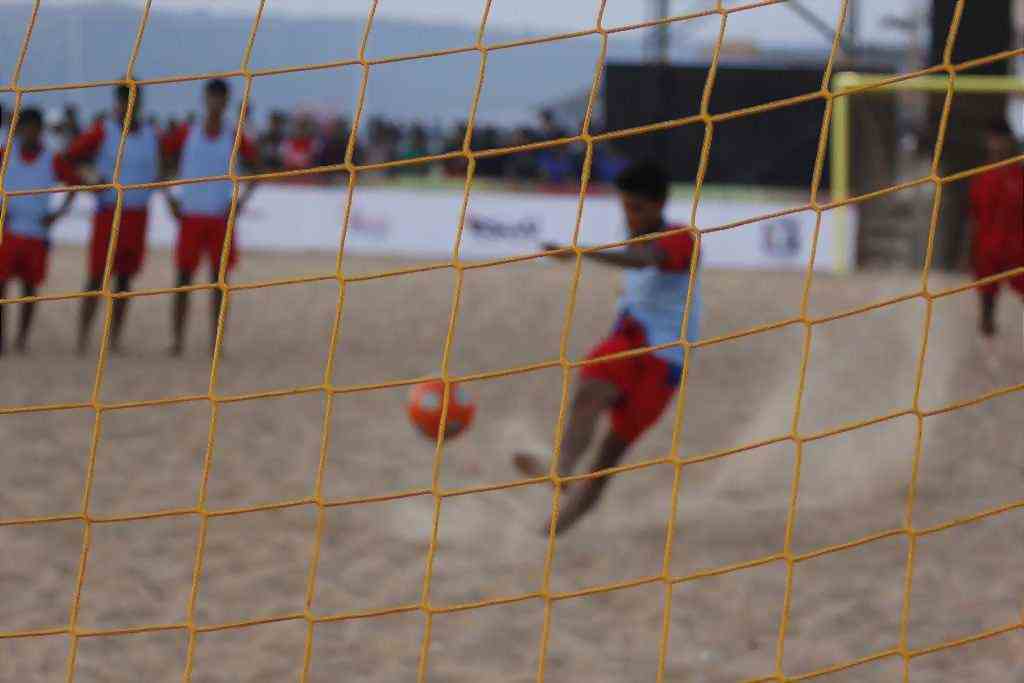The Brazilian people’s passion for football games has moved beyond the football pitch and onto the beach. Traditional moves were adapted to the sand, an environment where skill, improvisation, excellent physical conditioning and the swing and natural ability that Brazilians are known for in football, have all overflowed. The sun, the sea and the sand of the Copacabana beach have made up the scenery for the creation of the Beach Soccer, a sport full of plasticity, aerial plays, spectacular dribbles and goals…lots of goals.
Developed by the founding partners of Beach Soccer Worldwide, the Beach Soccer rules were established in a dynamic format, one which causes each player’s individual skills to prevail, while stressing fair play among the athletes. The game was originally intended as a highly appreciated spectator sport, valuing and generating businesses in advertising and sales.
The formula has worked out. Beach Soccer has conquered the world quickly, and is now played in 75 countries within the six FIFA Confederation zones. It is a sport for all audiences, played by men, women and children alike.
The scene has always been the same: Lots of sun and heat, packed arenas, personalities from the sports world standing on the Podium of Honour, huge queues forming before dawn for a seat to watch World Championship finals, etc.
The participation of internationally renowned players such as flamboyant Frenchman Eric Cantona, legendary Spanish strikers Michel and Julio Salinas and Brazilian samba stars such as Romario, Junior and Zico has helped to expand television coverage to large audiences in over 170 countries worldwide, making Beach Soccer one of the fastest growing professional sports in the world and converting it into a major showcase for international commercial opportunity.



